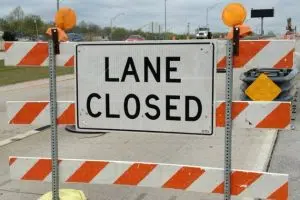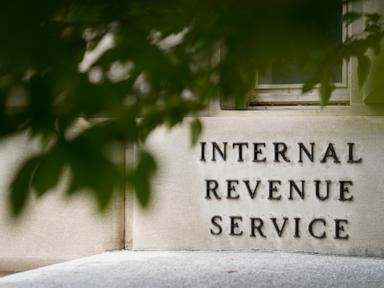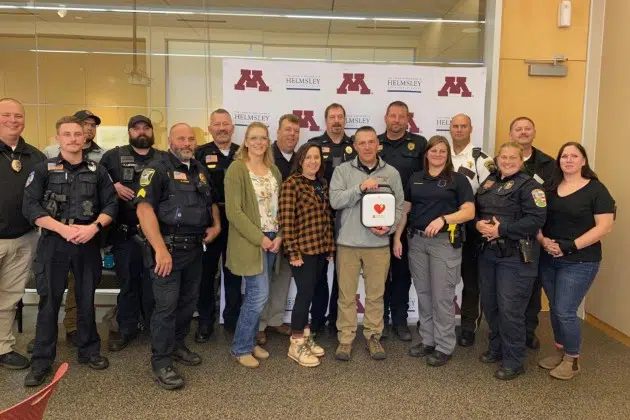(KNSI) – First responders around central Minnesota will be sharing in a grant to provide 925 automated external defibrillators.
The grant comes from the Leona M. and Harry B. Helmsley Charitable Trust, which awarded the money to the University of Minnesota Medical School. The $18.8 million will get a total of 8,300 AEDs into the hands of law enforcement and first responders statewide.
According to a press release from the Stearns County Office of Emergency Management, data from Minnesota Cardiac Arrest Registry to Enhance Survival, or CARES, shows that 70% of cardiac arrest incidents happen in homes. Studies conducted by the American Heart Association demonstrate a dramatically higher survival rate for cardiac patients shocked by law enforcement, who are generally first on the scene, especially in rural areas.
Regional EMS Coordinator Marion Larson says the newly deployed AEDs have already saved lives. She gives an example, “Crow Wing County recently got their AEDs through this program. They got their AED training and got them in to the squad [cars] on Friday. And by Tuesday they had a call to use it. The deputy was able to go and put the AED on and shock the person. They were recovering at the hospital, as far as I know.”
The AHA says AEDs should be applied within the first three to five minutes of a cardiac arrest to ensure the best possible outcome. The AEDs analyze heart rhythms throughout CPR, reduce pauses and allow for improved blood circulation to increase the odds of survival. Many public places now have an AED that anyone can operate. Once the device is activated, a voice will talk you through how to use it.
The press release says AEDs analyze heart rhythms throughout CPR, reduce pauses and allow for improved blood circulation to increase the odds of survival. Using Wi-Fi connectivity, these self-monitoring devices can report their status to a centralized online data repository, allowing law enforcement agencies to know whether their devices are ready or in need of maintenance.
Larson says the additional AEDs free up existing units to be placed elsewhere within towns or cities. She says, “The AEDs that are getting replaced, they can now go out into the community. So, what’s currently in the squad cars, those can go out into the community; to fire departments, to schools, to businesses, and churches.”
Reporter Grant Dossetto contributed to this story.
___
Copyright 2022 Leighton Enterprises, Inc. All rights reserved. This material may not be broadcast, published, redistributed, or rewritten, in any way without consent.










